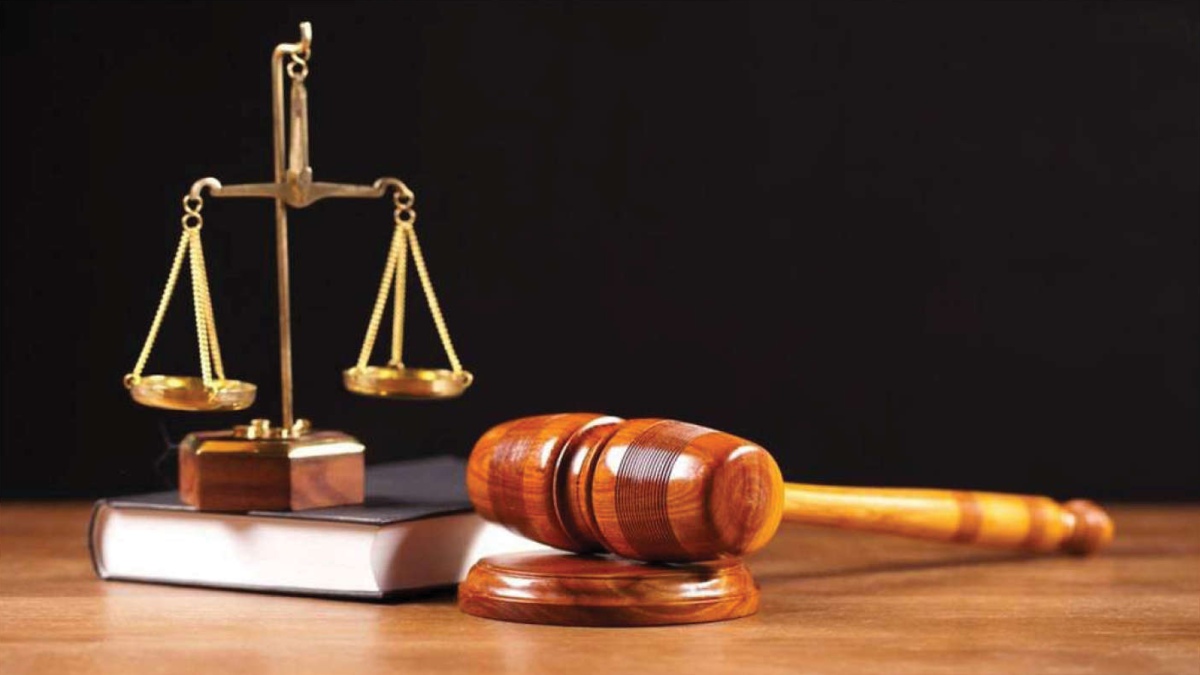“Democracy is a government by the people in which the supreme power is bestowed in the people and exercised directly by them or by their elected representatives under anunrestricted electoral system.” A democratic government indicates a democratic state but a democratic state does not means a democratic government. A democratic state mean is that the community, as a whole possesses sovereign authority and maintains ultimate controlling and dismissing a government. In a democratic setup, government is only one pillar coexisting in a social fabric of various institutions, political parties, organisations and associations. This diversity is termed as pluralism, and it assumes that many organisations and associations in a democracy are independent of the government. The pillars of Democracy are as stated: –
• Sovereignty
• Government elected by the citizens
• Human Rights
• Majority rule
• Minority rights
• Free and Fair Elections
• Due process of law
• Equality before law
• Constitutional limits on the government
Since the early days of the World Wide Web, the knowledge of exploiting new media for political participation and democratic practices has been framed as contemporary and highly innovative. While these claims are acceptable with regard to the information and communication technologies, which enable Internet-based democratic processes, it is important to keep in mind that the diverse suggestions for electronic democracy draw on—explicitly or implicitly—well-established concepts of democratic theory. Most democratic systems in the world are based on key elements of the liberal school of thought. A characteristic of this model is its strong emphasis on procedures. Instead of attempting to realise a predefined form of society, this model focusses on processes and institutions that safeguard binding decision-making. The democratic process is conceptualised as a market-like competition between strategic actors, such as interest groups, political parties and elites. The citizen is conceptualised as a consumer whose political participation is more or less limited to the periodic expression of individual preferences. Processes of political will formation, based on public debate and learning, do not receive heightened attention in this model.
By most theoretical stipulations India should not have subsisted as a democracy because of these major reasons namely: –
• Poverty
• Citizens are largely rural and uneducated
• Civic institutions are weak.
It is a paradox even for those who believe in a positive relationship between economic equality or social homogeneity and democracy. India’s wealth disparity is one of the highest in the world. Indian society is also one of the most heterogeneous in the world (in terms of ethnicity, language, caste and religion), and social inequality, a legacy of the caste system, is considerable. Yet this country, with the world’s largest electorate, keeps lumbering on decade after decade as a ramshackle, yet resilient, democratic polity. There are numerous paths in which the historical and social roots of democracy in India are different from those in the West, and the indigenous political culture has fundamentally redesigned the processes of democracy. These variances are reflected in the existing functioning of democracy in India, making it difficult to fit the Indian case to the canonical cases in the standard theories of democracy.
Digital democracy is an attempt to practise democracy without the limits of time, space and other physical conditions, using ICT or CMC instead, as an addition, not a replacement for traditional ‘analogue’ political practices. Coleman and Norris (2005) sanction the fondness for “e-democracy” as the key concept. Internet gives an open forum for political discussions and for people coming from different walks of life. Citizens exchange arguments and consider different views and contentions that are curated to secure the public welfare. By the process of this exchange of ideas and opinions citizens can come to an understanding regarding which procedure, action and policy will be best in application. Deliberation is an important precondition for the legitimacy of democratic political decisions. Deliberation in democratic processes produces outcomes that protects the public or common good through reason rather than through political power.
With all physical activities screeching to an unforeseenstandstill, the digital space became humankind’s best friend during the pandemic. The Government of India made use ofICT as well, in order to address the pandemic, when it launched initiatives like the contact-tracing app Aarogya Setu, the government e-services app Umang, the National Digital Health Mission (NDHM) among others. Apart from them, there have been innumerable district and panchayat-specific digital initiatives. However, such initiatives, while facilitating and enabling millions of Indians, did not consider the questions of universal access and literacy. ‘Digital Divide’ was nurturing its roots. In India, roughly 50% of the population, still have no access to the internet. This divide is the result of a lack of sufficient infrastructure push in the rural areas of the country. There is global belief that internet and social media give a pathway to individual’s opinion and strengthen it which in turn strengthen the democratic setup of the country but this is not as clear and easy as it looks because digitisation also poses threats to liberal democracy in the long run. The four major threats to be discussed are as follows: –
1. Corporate Algorithms have led to shift in power.
2. Technological Companies gain unprecedented market and political power.
3. Echo chambers are threatening to deepen social fissures.
4. Algorithms used in public and private sector decision making are opaque.
Many countries are exercising extreme resistance over the streaming of information. This takes place through bans and the disruption of internet and website access, the repudiationof digital anonymity, restrictions on and the manipulation of content, or the spread of disinformation and propaganda. Ensuring free and open internet is critical for realizing its democratizing and emancipatory benefits. In 2018, there were an estimated 196 internet shutdowns in 25 countries. This number is on the rise, from 75 in 2016 and 106 in 2017. The official justifications for shutdowns in 2018 were overwhelmingly cited as safety, followed national security, action against fake news and hate speech, and school exams.The countries that used this measure most in 2018 include India, Pakistan, Yemen, Iraq and Ethiopia. India’s shutdown of the internet in Kashmir in August 2019 was the 51stshutdown in the country this year. Numerous countries including the United States, the United Kingdom and Australia are trying to weaken encryption tools through the creation of ‘backdoors’. Quite a few nations mandate the localization of personal data and the local storage ofencryption keys. The discussion around encryption and the contradiction between private and security remain unsettled. Encryption strategies must strike a balance between national security and individual freedom of expression. Disinformation campaigns and content manipulation by state and non-state actors increasing. State propaganda is often fictitious and circulated using paid content contributors. A recent study estimates that authors construct and publish approximately 500 million comments in a year. Their key objective is to strategically divert social media users from contentious subjects.
Like any subject E- Democracy also has its advantages and disadvantages,
ADVANTAGES
• Access to bulk information and happenings
• Easy and Structural Organisation
• Power and Open Portal for the people
DISADVANTAGES
• ‘Virtual’ Democracy (lack of idea of happenings of ground realities)
• Digital division of the citizens
• Anti-Democratic forces
• Echo Chambers
• Equality to access
• Right of Participation
• Validation
• Delegation.
Risks obscuring a fundamental prerequisite for democratic flexibility in politics and technology: that societies must resist their own domestic inclinations to adopt repressive principles. In 2020, after continuoustensions and frictions at the border with China, Indiangovernment banned over one hundred Chinese apps. This accompanied other sanctions on Chinese technology, including hindering Huawei and ZTE from partaking in 5G trials and imposing cumbersome obligations on Chinese foreign direct investment.
E-democracy needs rules and regulations. Regulation desires to be citizen centred and balanced. It is necessary to focus on citizens’, limit the powers of public authorities, avoid over-regulation and authorize scope for initiatives by stakeholders, including citizens. Regulation of e-democracy entails empowerment and safeguards. It can take various forms and be undertaken by a variety of players at various levels, including public authorities, providers of tools and users themselves. A balance between rights of access and safeguards is the only way to sustain and protect citizens’ interests. All e-democracy participants have to act in a transparent and fairmanner and be responsible and accountable for their actions and for publicly expressed opinions. The human rights ethics established by inter-governmental organisations, in particular the United Nations need to be followed. Media Houses should play a linking role between the policy makers and the stakeholders by reporting an unbiased political news and day-to-day happenings.
However, since the pandemic has hit the world, everything has come on the virtual platform and has survived in this manner since the last 3 years, keeping this new world arrangement in mind we cannot deny that E-Democracy is the way but it has a long way to go in terms being stable, balanced and unbiased, some of the ways in which these criteria’s can be met are as follows: –
Balanced and verified facts must be presented to the users to help them understand the problem, alternatives and opportunities.
Procedures such as e- voting, e- petitions and e-consultation must be introduced.
Regular and two-way communication between citizens and policy makers
Citizens should get an opportunity to contribute to political agenda setting, planning and decision making at different levels.
Digital tools are used to explain the rationale behind political decisions and initiatives
While reviewing and improving E-Democracy, the focus should be on the democratic structure and its stakeholders not on the technology.
Institutions and citizens should be responsible for e-democracy processes.
E-democracy measures should be compatible and integrated with, non-electronic forms of democratic engagement and participation.
Democracy is a promise and a challenge. It is a promise that free human beings, working together, can administrate themselves in a means that will serve their ambitions for personal freedom, economic opportunity, and social justice. It is a test because the accomplishment of the democratic enterprise rests upon the shoulders of its citizens and no one else.







